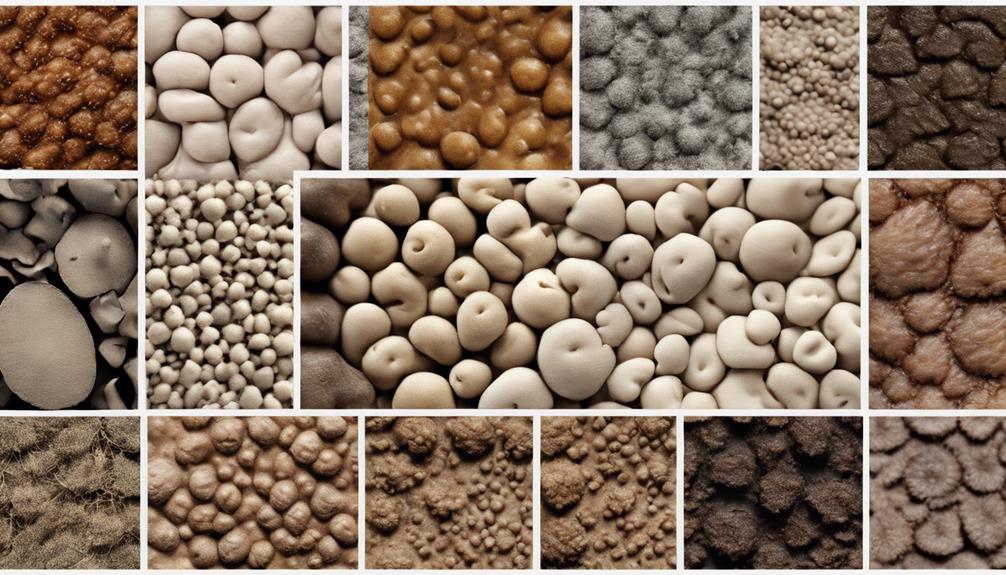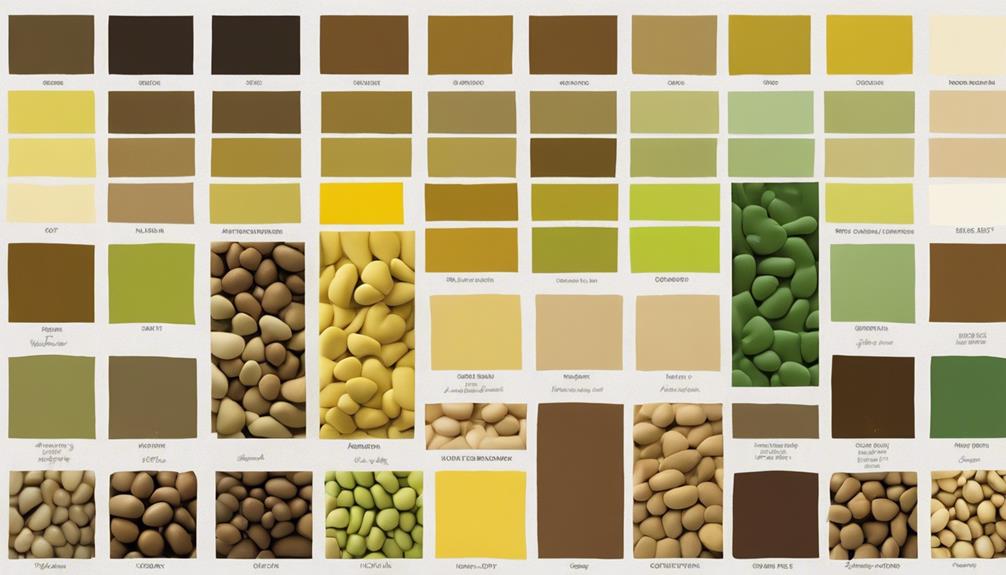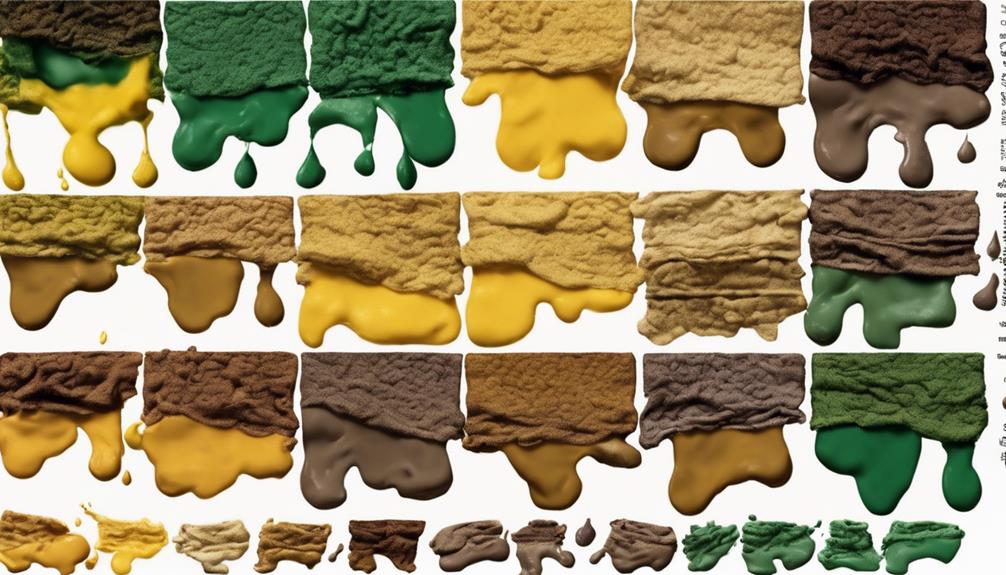So, you've started on the delightful journey of parenthood, and now you find yourself face-to-face with a diaper full of mysteries…or rather, seedy newborn poop.
Wondering what's normal and what's not? Let's uncover the secrets behind those tiny, smelly packages your little one keeps delivering.
Trust us; it's not as messy as it sounds, and knowing what to look for can provide valuable insights into your baby's well-being.
Key Takeaways
- Seedy newborn poop is yellow with seed-like particles, indicating efficient digestion.
- Frequency of seedy poop multiple times a day reflects healthy digestion.
- Color variations like yellow or green provide insights into feeding and digestive health.
- Seedy appearance with high fat content assures parents of their baby's well-being.
Appearance of Seedy Newborn Poop
During the early weeks of a baby's life, the appearance of seedy newborn poop is typically characterized by a yellow or mustard color with small, soft, seed-like particles that resemble curdled milk. This distinctive appearance is a reassuring sign of efficient digestion and absorption of nutrients, particularly in breastfed infants.
Breast milk is rich in fats, which contribute to the high fat content of the stool, leading to its seedy texture. The yellow or mustard color is a result of the breakdown of bilirubin, a substance formed during the normal recycling of old red blood cells.
Witnessing seedy newborn poop is a positive indication that the baby's digestive system is functioning well and that essential nutrients are being effectively absorbed. Parents should anticipate observing this type of stool during the early stages of their baby's life, providing them with valuable insights into their infant's health and nutrition.
Texture of Seedy Newborn Poop

Often characterized by a grainy texture resembling tiny seeds or curds, seedy newborn poop is a normal and healthy sign of efficient digestion in breastfed infants. The texture of seedy newborn poop is a result of undigested milk fat present in breastfed babies' stool. Understanding the texture of seedy newborn poop can provide valuable insights into the baby's digestion process. Here are key points to note about the texture of seedy newborn poop:
- Grainy Texture: The poop may have a grainy texture similar to tiny seeds or curds.
- Yellow Color: Seedy newborn poop is typically yellow in color, which is a common hue for breastfed babies.
- Presence of Undigested Milk Fat: The texture is due to the presence of undigested milk fat in the stool.
- Sign of Efficient Digestion: The seedy appearance indicates that the baby's digestive system is efficiently processing breast milk.
- Reassurance for Parents: Identifying the seedy texture can reassure parents that their baby is receiving and digesting milk properly.
Frequency of Seedy Newborn Poop
The frequency of seedy newborn poop in breastfed infants serves as an important indicator of their digestive health and milk intake. Breastfed babies typically pass seedy stools multiple times a day, which is a reassuring sign of a healthy digestive system. The seedy appearance of the stool is due to the presence of undigested milk fat, a natural component of breast milk that aids in easy digestion for the infant. Monitoring the frequency and consistency of seedy newborn poop can offer valuable insights into the baby's feeding patterns and digestive processes.
| Frequency | Consistency | Digestive Health |
|---|---|---|
| Multiple times a day | Seedy appearance | Indicates healthy digestion |
Understanding the regularity of seedy newborn poop can help parents track the baby's milk intake and overall well-being. It is essential to observe any changes in frequency or consistency, as these could signal potential issues with feeding or digestion that may require attention from healthcare providers.
Color Variations in Seedy Newborn Poop

Observing the color variations in seedy newborn poop provides valuable insights into the digestive health and nutrient absorption of breastfed infants. When examining the color of seedy newborn poop, it's crucial to consider the following:
- Yellow or Green Hue: Seedy newborn poop typically appears yellow or green, resembling mustard or scrambled eggs, indicating the presence of undigested milk fat.
- High Fat Content: Breastfed babies often produce seedy poop due to the high fat content in breast milk, contributing to the characteristic texture.
- Healthy Digestion: The seedy appearance of newborn poop suggests healthy digestion and efficient absorption of nutrients from breast milk.
- Texture Analysis: The seedy texture in newborn poop comes from undigested milk fat and other components, reflecting effective digestion and nutrient utilization.
- Feeding and Digestive Health Insights: Monitoring the color and texture of seedy newborn poop can offer valuable information about the baby's feeding patterns and overall digestive health, aiding in early detection of any potential issues.
Understanding Healthy Seedy Newborn Poop
In breastfed infants, the presence of seedy newborn poop, characterized by its mustard-yellow color and seed-like flecks, indicates a healthy digestive process breaking down milk fat efficiently. This type of stool is a reassuring sign for parents, as it suggests that their baby is receiving adequate milk intake and their digestive system is functioning well. The immature digestive system of breastfed newborns is adept at handling breast milk components, resulting in the distinctive color and texture of seedy poop. Over time, as the baby grows and their diet changes, the appearance of the stool may evolve, reflecting these adjustments.
| Key Points | Description |
|---|---|
| Color | Mustard-yellow |
| Texture | Seed-like flecks |
| Sign of healthy digestion | Efficient breakdown of milk fat |
Understanding the nuances of seedy newborn poop can provide valuable insights into your baby's well-being and aid in monitoring their development.
Frequently Asked Questions
What Does Seedy Newborn Poop Look Like?
Seedy newborn poop looks like small, soft, yellow or green seed-like particles in the stool. It consists of undigested milk curds passing through the baby's digestive system. The seedy texture indicates healthy digestion in infants.
Can Newborn Poop Be Too Seedy?
Newborn poop can vary in seediness, which is normal in breastfed babies. Excessive seed-like particles might indicate an issue, like lactose intolerance. Consulting a pediatrician is important for proper evaluation and guidance.
When Is Newborn Poop Not Seedy?
When newborn poop lacks its typical seedy texture, it might signal underlying breastfeeding or digestive concerns. This deviation warrants attention from healthcare providers to guarantee proper nutrient absorption and digestive health in our little ones.
What Does Seedy Looking Poop Mean?
Seedy looking poop in a newborn indicates a breastfed baby. The appearance results from undigested milk curds in the stool. Breast milk's healthy fats contribute to the seedy texture. It's a normal and positive sign of adequate breastfeeding.
Conclusion
To sum up, identifying seedy newborn poop is essential for parents to monitor their baby's health. One interesting statistic to note is that newborns typically pass meconium for the first few days, changing to yellow, mustard-like poop for breastfed babies.
Any changes in color or consistency could indicate underlying health issues. It's important for parents to closely observe their baby's bowel movements and seek medical advice if there are any concerns.
Remember, a healthy baby's poop can serve as a valuable indicator of their well-being.









